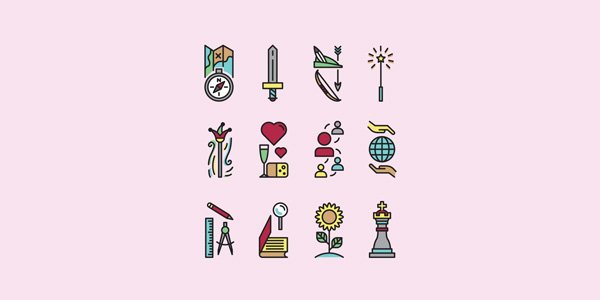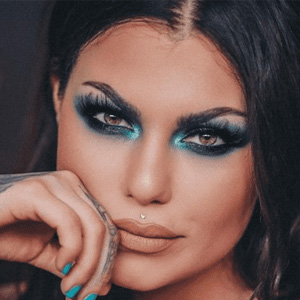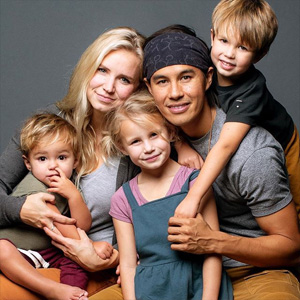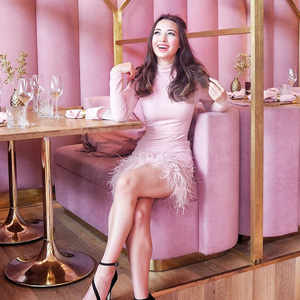- Tools
- Learn
- Help
Before you leave..
Why not download RevGlue latest free eguide.

If you’ve logged on to social media lately, you’ve probably seen hundreds of videos using the same audio, creative concept, or dance choreography. They say imitation is the sincerest form of flattery, but as a content creator, it’s important to be an original-- not an imitator. When you have a strong personal branding strategy, your style is immediately noticeable as 100% yours, instead of getting lost amidst the viral trends. Today, we’re answering your top questions on personal branding for content creators: How do I brand myself as an influencer? What is a personal brand blog? How can personal branding for content creators increase my affiliate income?
When you understand personal branding for influencers you are one step closer to building the money-making empire you desire.
Content:
What is a personal brand?

Everyone has a personal brand-- it’s the interests, expertise, and style that makes you-- you. For the Average Joe, the personal brand influences birthday gifts and wardrobe preferences. But the personal branding of a content creator involves a little more strategy.
To develop a personal brand, you’ll need to think through your ideal audience, how you want to show up for them, and the branding choices that will reinforce your brand.
Core values and expertise

First things first. What is your ultimate goal? Are you interested in sharing fashion, home goods, travel, or lifestyle? As an affiliate, you’ll need to choose a niche, and build your brand around that niche. When your core values, expertise, and brand are in sync, you’ll build a loyal following that’s interested in the exact type of content you create.
You may be thinking, “there are so many blogs in my niche,” and that’s where a personal brand comes into play. There may be dozens of blogs in your niche, but if you create a one-of-a-kind brand that’s interesting to readers, you won’t have to worry about the competition.
What’s your brand archetype?

If choosing a personal brand feels overwhelming, let’s simplify it a bit. Carl Gustav Jung, the founder of analytical psychology, researched the four major archetypes that exist in the collective unconscious. In marketing, 12 Jungian Archetypes are applied to brands to establish their unique brand personality. Read through the definitions to see if you resonate with one of these archetypes.
Sage (BBC)
The Sage values wisdom and truth, and is committed to education and seeking knowledge.
Innocent (Coca-Cola)
The Innocent has a knack for seeing the good in the world and values happiness, optimism, and hope above all.
Explorer (Jeep)
The Explorer is known for being fearless. They value freedom and seek to help others experience new things.
Ruler (Mercedes-Benz)
The Ruler is always in control. These brands value power and are often associated with luxury.
Creator (Apple)
The Creator is imaginative and innovative, driven to build things of enduring value and seeing potential in all things.
Caregiver (Johnson’s)
The Caregiver values compassion and caring for others and builds a brand that focuses on nurturing their customers.
Magician (Disney)
The Magician is a whimsical, visionary archetype, making dreams come true.
Hero (Nike)
The Hero’s goal is to make the world a better place and is committed to proving its worth and providing high-quality products.
Outlaw (Virgin)
The Outlaw (also known as the Rebel) is a revolutionary, bucking the status quo to develop radical new ideas and products.
Lover (Chanel)
The Lover archetype builds a brand on romance, emotion, and intimacy. They value passion and the finer things in life.
Jester (Dos Equis)
The Jester builds a brand through humor and lightheartedness.
Everyman (Ikea)
The Everyman values connection and belonging, and places importance on building a down-to-earth brand.
When you discover an archetype that resonates within yourself, you’ve just found a great place to start building your personal brand.
Maintain consistency in brand voice, image, and tone

Now that you’ve identified your core values, expertise, and archetype, think through how you can bring it all together under one branding umbrella.
Consider creating written brand guidelines that can be distributed to writers, artists, and new hires. You may be a one (wo)man show now, but as your brand grows, you’ll need to train others on what it means to be a part of your brand.
In the branding document, include brand colours (with specific hex codes), image guidelines (orientation, cropping, dos and don’ts), and brand voice (contractions, slang, and whether cursing is ok). Setting rules may seem like a waste of time when you are the brand, but thinking through the way you want to present your brand to the world will help you decide what to post, and-- more importantly-- what not to post.
When brand personas are deeply ingrained into advertisements, you may not even need to see a logo to associate the ad and the brand. Follow the lead of Apple, Harley Davidson, and Nike, as you create a wholly unique brand image and style your followers will recognise at first glance.
Let’s get social

Until now, your social media may have been a mish-mash of things you ate, friends you spent time with, and events you attended. When you begin treating your blog and social media as a brand, you’ll want to develop a strategy for each platform that furthers your persona.
When setting up your profiles, be sure to completely fill out your social media profiles with a profile photo, bio, and link. Your handles and imagery should remain consistent across platforms. Think of your social media as a business card and make sure it’s as thorough as possible. Here are a few actionable steps you can take to promote your brand on the most popular social media platforms:
Instagram
The best way to build a personal brand is to get personal with followers on social media. Instagram stories give followers a unique opportunity to catch a glimpse of your daily life and see the human behind the brand.
If you’re a beauty blogger, invite followers to watch your daily makeup routine. Write about travel? Give them insight into your travel research and booking process. Are you a fashion blogger? Stories are a great space for unboxing videos and try-ons!
TikTok
Encourage engagement by asking followers to duet your videos on TikTok. Be innovative, stay on brand, and grow your following by giving viewers the chance to get involved. TikTok encourages authenticity, and this platform is the perfect place to get real with your followers and encourage them to do the same.
Facebook
Unlike Instagram and TikTok, Facebook makes it easy to share links and longer content. Link to your blog, share affiliate links with useful tips (but never spam your followers), and share long-form content that encourages engagement. Ask followers to comment, and always be sure to respond to every comment to build an active following.
You may also consider starting a Facebook group for like-minded creators. One of the best ways to elevate your brand is to help others with theirs!
Twitter
Like Facebook, Twitter allows users to share links-- but conciseness and consistency are key on this platform. Maintain an active profile, engage with other accounts, and don’t forget to follow! Research and join relevant Twitter chats to share knowledge and gain exposure with potential followers in your niche. Can’t find a Twitter chat? Consider hosting your own chat to establish yourself as a leader in your field.
Get inspired by the personal brands of these bloggers
We’ve talked about the big brands that embody each Jungian archetype, but it’s easy to succeed when your marketing budget is in the six-figure range. Let’s look at a few influencers who have created strong personal brands and a loyal following.
Bailey Sarian

When it comes to creating a niche, no one has created a mash-up quite like Bailey Sarian, the YouTube star behind Murder Mystery, and Makeup, and host of the Dark History podcast. She’s taken a passion for true crime and a penchant for makeovers and amassed millions of followers.
The Bucket List Family

Who says parenthood signifies the end of adventures? Jessica, Garrett, Dorothy, Manilla, and Calihan have visited 85 countries together and bring millions of followers along as they share extraordinary adventures across the globe, recommending destinations and accommodation as they go.
Jordan Rose

UK-based fashion influencer Jordan Rose, better known as @HelloMissJordan, is known for her fairytale dresses and romantic adventures across the UK. Followers look to her as they curate their own closet with the dreamy dresses she recommends.
These influencers excel at personal branding, and they’re benefitting from advertising partnerships, affiliate income, and merchandise.
Measure success

How will you know if your personal branding strategy is working? Set some KPIs to measure the success of your brand. Track mentions, guest blog invitations, speaking engagements, and sales conversions. Chart the data over time to measure the success of your branding initiatives.
Don’t be afraid to let your personality shine

One last piece of advice? Don’t get too caught up doing what everyone else is doing. Stop following the trends and go out and create them! When you’re trailblazing a path, brands will follow.
Strong personal branding serves to set you apart from the competition, build trust, and increase potential earnings through affiliate income. Need help monetising your blog? RevGlue will help you save time and money as you establish an affiliate income. Get in touch with us to start monetising today!